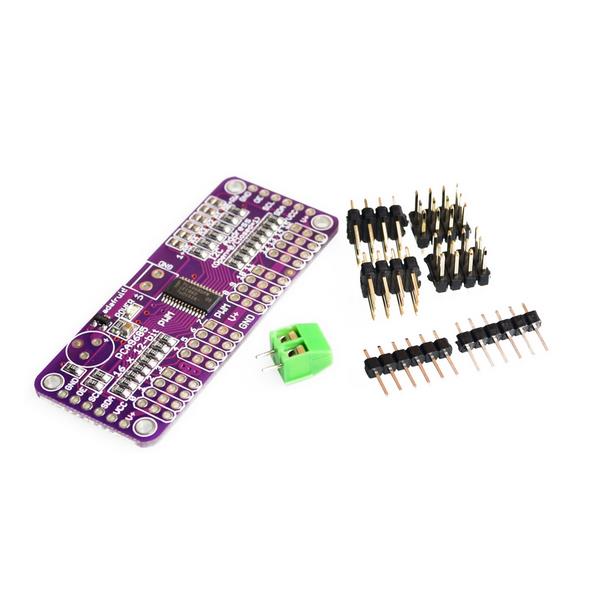Raspberry Pi Case-LTRIG
custom 1Pcs 16 Channel 12-bit PWM/Servo Driver-I2C interface-PCA9685 for Raspberry pi shield module servo shield
custom 1Pcs 16 Channel 12-bit PWM/Servo Driver-I2C interface-PCA9685 for Raspberry pi shield module servo shield
Couldn't load pickup availability
Warm prompt: Dear buyer, Our cheapest transportation services Economic category logistics (SunYou Economic Air Mail ,China Post Ordinary Small Packet Plus ) can be traced only befor it arrive your country,please choose Standard category logistics if you want a full tracking info.
You want to make a cool robot, maybe a hexapod walker, or maybe just a piece of art with a lot of moving parts. Or maybe you want to drive a lot of LEDs with precise PWM output. Then you realize that your microcontroller has a limited number of PWM outputs! What now?
Using only two pins, control 16 free-running PWM outputs! You can even chain up 62 breakouts to control up to 992 PWM outputs
• It\'s an i2c-controlled PWM driver with a built in clock. That means that, unlike the TLC5940 family, you do not need to continuously send it signal tying up your microcontroller, its completely free running!
• It is 5V compliant, which means you can control it from a 3.3V microcontroller and still safely drive up to 6V outputs (this is good for when you want to control white or blue LEDs with 3.4+ forward voltages)
• 6 address select pins so you can wire up to 62 of these on a single i2c bus, a total of 992 outputs - that\'s a lot of servos or LEDs
• Adjustable frequency PWM up to about 1.6 KHz
• 12-bit resolution for each output - for servos, that means about 4us resolution at 60Hz update rate
• Configurable push-pull or open-drain output
• Output enable pin to quickly disable all the outputs
We wrapped up this lovely chip into a breakout board with a couple nice extras
• Terminal block for power input (or you can use the 0.1" breakouts on the side)
• Reverse polarity protection on the terminal block input
• Green power-good LED
• 3 pin connectors in groups of 4 so you can plug in 16 servos at once (Servo plugs are slightly wider than 0.1" so you can only stack 4 next to each other on 0.1" header
• "Chain-able" design
• A spot to place a big capacitor on the V+ line (in case you need it)
• 330 ohm series resistors on all the output lines to protect them, and to make driving LEDs trivial
• Solder jumpers for the 6 address select pins



Share










